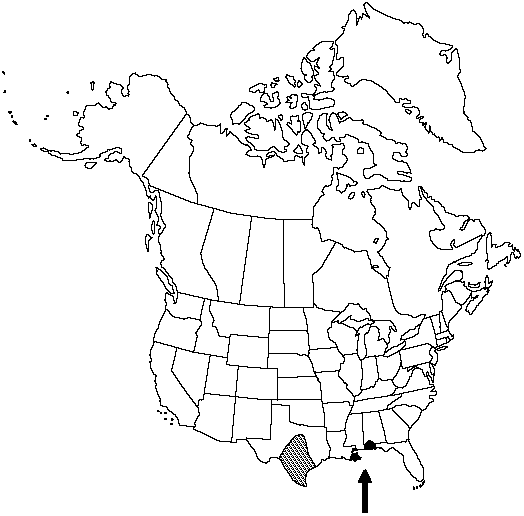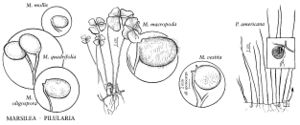Difference between revisions of "Marsilea macropoda"
in Kunze,Amer. J. Sci. Arts ser. 2, 6: 88. 1848.
FNA>Volume Importer |
FNA>Volume Importer |
||
| Line 33: | Line 33: | ||
-->{{#Taxon: | -->{{#Taxon: | ||
name=Marsilea macropoda | name=Marsilea macropoda | ||
| − | |||
|authority=Engelmann ex A. Braun in Kunze | |authority=Engelmann ex A. Braun in Kunze | ||
|rank=species | |rank=species | ||
| Line 48: | Line 47: | ||
|publication year=1848 | |publication year=1848 | ||
|special status= | |special status= | ||
| − | |source xml=https://jpend@bitbucket.org/aafc-mbb/fna-data-curation.git/src/ | + | |source xml=https://jpend@bitbucket.org/aafc-mbb/fna-data-curation.git/src/eaa6e58056e40c9ef614d8f47aea294977a1a5e9/coarse_grained_fna_xml/V2/V2_616.xml |
|genus=Marsilea | |genus=Marsilea | ||
|species=Marsilea macropoda | |species=Marsilea macropoda | ||
Revision as of 19:49, 16 December 2019
Plants forming dense clones. Roots arising at nodes. Petioles 5–39 cm, hairy. Pinnae 9–35 × 8–39 mm, conspicuously white hairy abaxially, hairy adaxially; hairs often exceeding margin to make pinnae appear white margined from above. Sporocarp stalks erect, frequently branched, attached 2–4.5 mm above base of petiole; unbranched stalks or ultimate branches of stalks 8–17 mm; common trunk of branched stalks 1–5 mm (rarely 2–3 unbranched stalks attached separately to same petiole). Sporocarps strongly ascending, 6–9 × 4.5–5.5 mm, 2 mm thick, elliptic or quadrate in lateral view, covered with matted or twisted hairs; raphe 1.6–2.4 mm, proximal tooth 0.4–0.5 mm, blunt, distal tooth absent or present as slightly raised area. Sori 19–23.
Phenology: Sporocarps produced nearly year-round (Feb–Nov).
Habitat: On mud and in shallow water, locally abundant in clay soils of ditches, ponds, marshes
Elevation: 0–400 m
Distribution

Ala., La., Tex., Mexico.
Discussion
Marsilea macropoda is introduced in Alabama and Louisiana.
Marsilea macropoda, with its tall, hairy leaves and branched sporocarp stalks, is a striking and distinctive species, worthy of cultivation. It is sympatric with M. vestita over much of its range, and individuals that appear to be hybrids have been collected in Blanco, Brazos, and Kleberg counties in Texas. These plants combine the large hairy leaves of M. macropoda with the shorter-stalked sporocarps bearing a superior tooth found in M. vestita.
Selected References
None.
